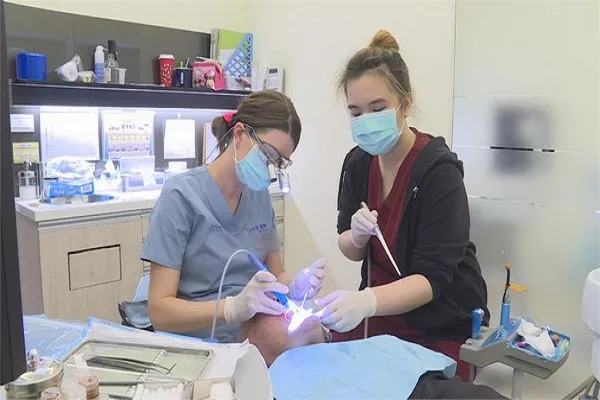Maintaining good oral health is not only essential for a sparkling smile but also for overall well-being. When faced with the need for a tooth filling, one of the first concerns that come to mind is the cost. Dental insurance can be a saving grace, but understanding the nuances of pricing is crucial. In this article, we will delve into the factors that influence the cost of tooth fillings with insurance coverage.
Factors Influencing the Cost of Tooth Fillings
Type of Filling Material:
Amalgam fillings, composed of a mixture of metals, tend to be more affordable than composite fillings, which are tooth-colored and blend seamlessly with natural teeth.
Location and Dental Practice:
Dental costs vary regionally, and the type of dental practice, whether it’s a general dentist or a specialized clinic, can impact the overall price.
Severity and Size of the Cavity:
The extent of tooth decay and the size of the cavity play a significant role in determining the cost. Larger or more severe cavities may require additional materials and time, affecting the overall expense.
Dental Insurance Coverage:
The type of dental insurance coverage you have greatly influences the out-of-pocket costs. Different insurance plans offer varying levels of coverage for tooth fillings, affecting the final expense for the patient.
Understanding Dental Insurance Coverage for Fillings
Preventive Care Coverage:
Many dental insurance plans emphasize preventive care, often covering the full cost of routine check-ups and cleanings. Some plans may also provide coverage for a certain number of fillings annually as part of preventive care.
Type of Filling Coverage:
Insurance plans may cover certain types of fillings more comprehensively than others. It’s essential to understand the specifics of your coverage, including any limitations on certain materials or procedures.
Deductibles and Co-Payments:
Dental insurance plans typically have deductibles and co-payments. The deductible is the amount the patient must pay before the insurance coverage kicks in, while co-payments are the portion of the cost the patient is responsible for after the deductible is met.
Annual Maximums:
Dental insurance plans often have annual maximums, capping the amount they will pay for dental services in a calendar year. Understanding these maximums is crucial to managing costs effectively.
Estimating Costs and Planning Ahead
Obtain a Treatment Plan:
Before undergoing any dental procedure, ask your dentist for a detailed treatment plan. This plan should outline the type of filling recommended, the estimated cost, and the expected insurance coverage.
Contact Your Insurance Provider:
Reach out to your dental insurance provider to clarify coverage details. Confirm the extent of coverage for fillings, any limitations, and inquire about the deductible and co-payment requirements.
Explore In-Network Providers:
Choosing an in-network dental provider can often result in lower out-of-pocket costs. In-network dentists have pre-negotiated rates with insurance companies, making services more affordable for the patient.
Conclusion
Understanding the cost of tooth fillings with insurance is a proactive step towards managing dental expenses. By considering factors such as the type of filling, dental practice location, and insurance coverage specifics, individuals can make informed decisions about their oral health. Taking the time to explore treatment plans, communicate with insurance providers, and choose in-network providers can contribute to a smoother and more cost-effective dental experience. Remember, investing in preventive care today can lead to a healthier and more budget-friendly smile in the long run.
How to treat early stages of gingivitis?































